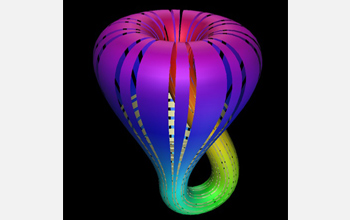It seems that nature "is" a Klein bottle in the following sense. There is a growing field in applied topology (yes, I said that) which goes by "topological data analysis" or sometimes "persistent homology". As I understand it, it works like this: take a manifold embedded in Euclidean space and suppose you have a way to extract a huge number of sample points from the manifold. With enough sample points it is in principle possible to build a simplicial approximation to the manifold which is refined enough to capture its local structure, and one ought to be able to recover actual topological invariants of the manifold by computing them for these approximations and letting the number of sample points approach infinity. This might be how the human eye assembles intuition for the geometry of an object from just looking at it, a process which collects a very large but finite number of sample points.
Now here's a crazy idea. Let's crank things up a notch and imagine the following experiment: go out in the world, take a huge number of high resolution photographs of images of clouds and trees and other natural objects, break them down into patches of 3 pixels by 3 pixels, and treat each patch as a point in $\mathbb{R}^9$. In other words, we are sampling the subspace of $\mathbb{R}^9$ of "natural images". Question: what would the topological structure of this space be? Crazy, right?
Well, this experiment has actually been done and it turns out that the space of natural images is our good old non-orientable friend, the Klein Bottle:

Who would've thought?
